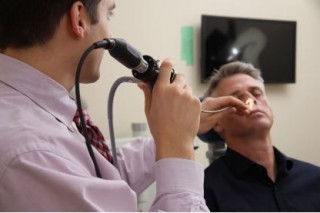Ashford Clinic Blog
3 Causes of Nasal Obstruction

Do you sometimes have trouble breathing through your nose? It’s not an uncommon problem, as this issue affects people of all ages from toddlers to adults. It is important that the mechanisms behind breathing through your nose work flawlessly most of the time, as the nose serves to filter, clean, humidify, and warm the air we breathe. Here are the three most common causes of nasal obstruction.
Inferior Turbinate Hypertrophy
The inferior turbinates are just inside the nostrils, and these nasal structures are responsible for creating the nasal cycle, directing airflow within the nose. Sometimes, these structures swell with blood to constrict the nasal passages and shrink back to their normal size to increase air flow. There are reasons for the turbinates to become unnaturally swollen, including the common cold, gravity, and predisposition to large turbinates that causes even the natural swelling of the nasal cycle to restrict too much airflow called Inferior Turbinate Hypertrophy. Treatment for Inferior Turbinate Hypertrophy can include decongestants and nasal sprays as well as surgical procedures that can range from a minimally invasive method of shrinking soft tissues, to removing portions of soft tissue and bone, to removal of the entire inferior turbinate (in extreme circumstances).
Deviated Septum
A deviated septum occurs when the cartilage at the center of the nose called the septum is uneven, resulting in one nostril being larger than the other. A deviated nasal septum can cause complications including a blocked nostril or difficulty breathing. The most effective treatment for a deviated septum is surgery, called a septoplasty, in which the deviated cartilage or bone is removed which straightens the structure and relieves the obstruction. Depending, on the location of the deviation, a rhinoplasty technique (also referred to as plastic surgery) may be necessary to reconstruct the supporting mechanism at the tip of the nose.
External Nasal Valve Collapse
Feeling equally restricted in both nostrils while taking a deep breath is an indicator of external nasal valve collapse. Most everyone deals with a certain amount of external nasal valve collapse, it can be seen in the mirror while taking a deep breath air pressure causes the nostrils to collapse inwards. Problems arise when this collapse causes obstruction even while breathing softly due to weak or floppy cartilage supporting the external nose. There are many methods for treating external nasal valve collapse, including:
- Breathe Right strips.
- Stents or splints worn inside the nose often referred to as nasal cones or springs.
- Nasal valve splinting surgery, a simple procedure that adds rigidity to the external valve region with either scar tissue or sutures.
- Rhinoplasty techniques (or plastic surgery) to add cartilage to the nasal valve region and are very effective in preventing collapse, which are more involved procedures with longer recovery times
If you are having difficulty breathing through your nose, a comprehensive nasal exam is necessary to get to the root cause. Call Ashford Clinic at 706-248-6860 to make an appointment for relief for your nasal obstruction.


